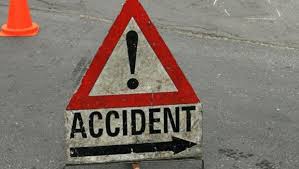Definition of accident
An accident is a sudden, unplanned, unintended and usually an undesirable event that causes damage, injury or death. An accident can be grouped into physical and non-physical accident. Examples of physical accidents include unintended motor vehicle collisions or falls, being injured by touching something sharp, hot, electrical or ingesting poison while non-physical examples are unintentionally revealing a secret or otherwise saying something incorrectly, forgetting an appointment etc.
Causes of accidents
Accident occurs as a result of unsafe acts or unsafe conditions. In most cases when accident occurs, it is the fault of the person involved in the incident. Unsafe acts cause more accidents and injuries as unsafe conditions. Some of the most common causes of accidents are:
- Taking shortcuts: Every day people make decisions with the hope will make the job faster and more efficient. But do time savers ever of making their job faster thereby risking their own safety. Short cuts reduce safety consciousness and increased the chance for accident.
- Being over-confident: Confidence is a good thing. Overconfidence is too much of a good thing. A felling that “It will never happen to me” is an attitude that can lead to improper procedures, tools, or methods which can lead to accident.
- Starting a task with incomplete instructions: To do the job safely and right the first time one needs complete information. Embarking on a job without proper explanations about work procedures and safety precautions can lead to accidents.
- Ignoring safety procedures: Purposely failing to observe safety procedures can endanger people by exposing them to accidents.
- Mental distractions: Having a bad day or worrying about to much can lead to a drop in ‘mental’ guard which can pull focus away from safety procedures.
- Failure to pre-plan work: Being hasty in starting a task, or not thinking through the process can put lead to accidents
Consequences of accidents
Just like any kind of unfortunate incidents, accidents at work have the potential to take a heavy toll on a person’s life. Severe injuries in the form of shoulder sprain or back injuries can confine a person for a longer period, disallowing him to earn his livelihood. The injuries incurred by way of accidents are even more disastrous considering that they can, at times, lead to the death of a person.
Accidents can also lead to economic losses due to damage to properties which are involved especially in the physical accidents. For a example an accident involving a motor vehicle can lead to damage of the vehicle thereby lead to financial losses to the owner.
Benefits of safety precautions
Safety precautions help in preventing accidents and leading to several benefits which can include:
- Reduced costs: The cost of accidents is high which may include injury, lost of life and properties can be reduced through adequate safety precautions.
- Reduced risks: Safety precaution reduces the risk of accident which it associates consequences.
- Lower employee absence and turnover rates: Safety precautions reduce mindless accidents which will lead to absenteeism of workers and in turn lead to lower turnover rates.
- Fewer accidents: Adequate safety precautions lead to fewer accidents which lead to a higher quality of life, healthier, happier and better lifestyle.
References
Nwachukwu, A. (2012). Industrial Accident Prevention and Occupational Safety. Owerri: Totan Publishing Company.
Oseghe, E. & Odejerho, E. (2004). Occupational Health and Safety Education.
Ridley, R. (2010). Safety at Workplace. Butterworth Penemann Ltd. Oxford London
Runyan, C.W., Casteel, C. & Perkis, D. (2015). Unintentional injuries in the home in the United States Part I: mortality. Am J Prev Med. 28 (1): 73–9
Taylor, G.A., Easter, K.M. & Hegney, R.P. (2014). Enhancing Occupational Safety and Health. Churchill Livingstone: Elsevier Inc. pp. 241–245.


